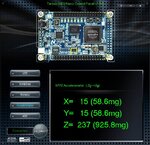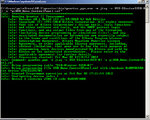sindredit
Junior Member level 1

Hi,
I am have bought a FPGA main board called Cyclone IV DE0-Nano Development and Education Board.
The card has accelerometer, so I want to create a program in C# that reads the cards accelerometer data via USB in real time and then draws a graph.
I am familiar with drawing the graph, but I am unsure on how to build the USB-interface.
I havent actually begun learning much yet, so am looking for direction on where to start and perhaps where from there on, from people who are already well aware of the latest technologies.
Any help or advice would be greatly appreciated.
I am have bought a FPGA main board called Cyclone IV DE0-Nano Development and Education Board.
The card has accelerometer, so I want to create a program in C# that reads the cards accelerometer data via USB in real time and then draws a graph.
I am familiar with drawing the graph, but I am unsure on how to build the USB-interface.
I havent actually begun learning much yet, so am looking for direction on where to start and perhaps where from there on, from people who are already well aware of the latest technologies.
Any help or advice would be greatly appreciated.




